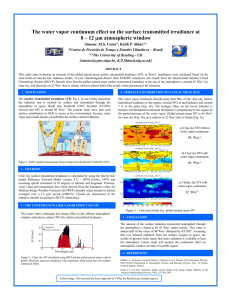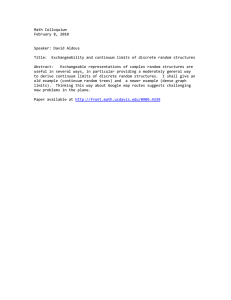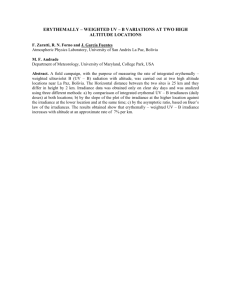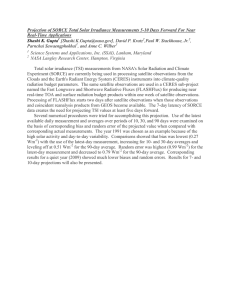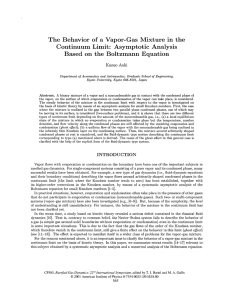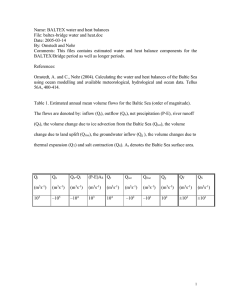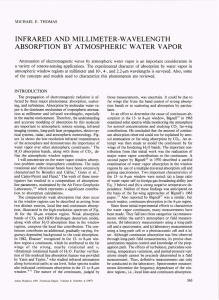The water vapor continuum effect on the surface transmitted
advertisement
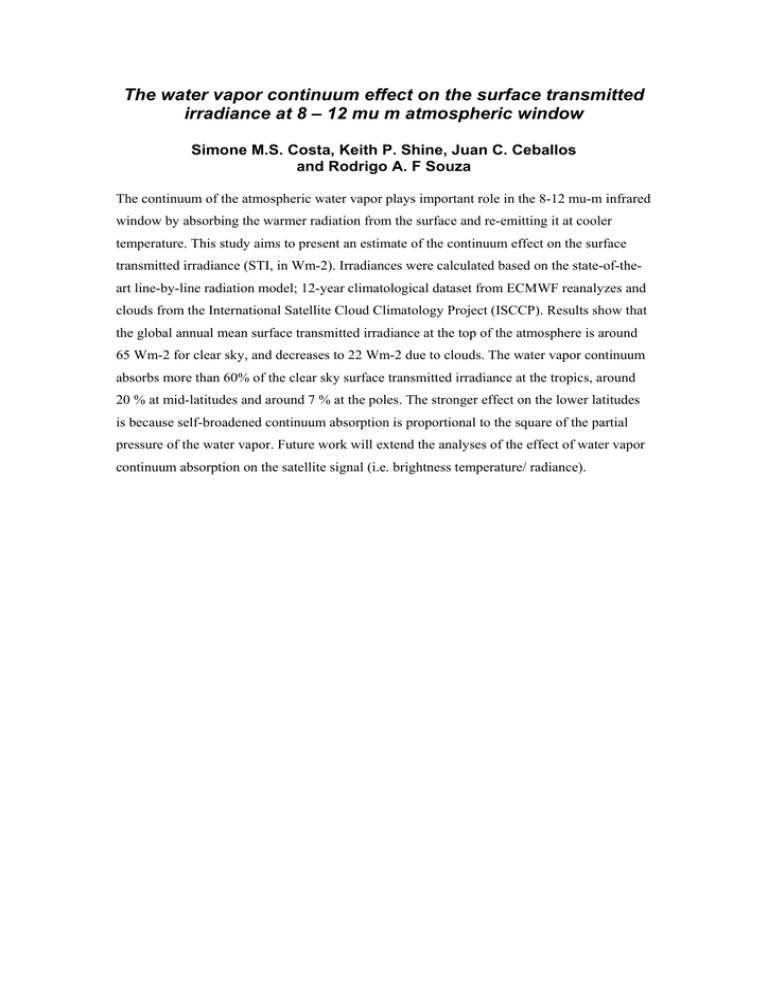
The water vapor continuum effect on the surface transmitted irradiance at 8 – 12 mu m atmospheric window Simone M.S. Costa, Keith P. Shine, Juan C. Ceballos and Rodrigo A. F Souza The continuum of the atmospheric water vapor plays important role in the 8-12 mu-m infrared window by absorbing the warmer radiation from the surface and re-emitting it at cooler temperature. This study aims to present an estimate of the continuum effect on the surface transmitted irradiance (STI, in Wm-2). Irradiances were calculated based on the state-of-theart line-by-line radiation model; 12-year climatological dataset from ECMWF reanalyzes and clouds from the International Satellite Cloud Climatology Project (ISCCP). Results show that the global annual mean surface transmitted irradiance at the top of the atmosphere is around 65 Wm-2 for clear sky, and decreases to 22 Wm-2 due to clouds. The water vapor continuum absorbs more than 60% of the clear sky surface transmitted irradiance at the tropics, around 20 % at mid-latitudes and around 7 % at the poles. The stronger effect on the lower latitudes is because self-broadened continuum absorption is proportional to the square of the partial pressure of the water vapor. Future work will extend the analyses of the effect of water vapor continuum absorption on the satellite signal (i.e. brightness temperature/ radiance).
